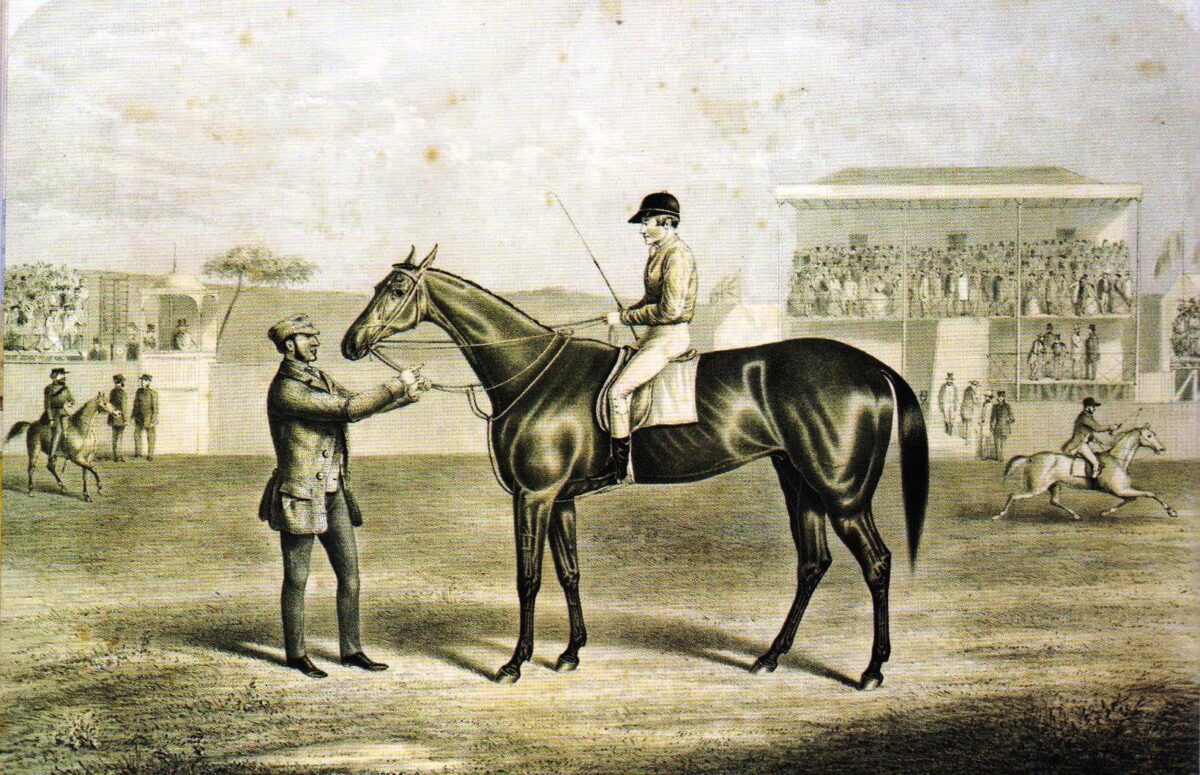Acknowledgements: © State Library of New South Wales; Equinity in the Picture Gallery; Free Exhibition from 8 October 2007 to 13 January 2008.
Featured Image: ‘Flying Buck’: The winner of the first Australian Champion Sweepstakes, October 1st 1859; De Gruchy and Leigh after Frederick Woodhouse Senior. The horse was usually presented in full-length side-view with head in profile, sometimes including informative props or background. The jockey is mounted at a racecourse with groom or owner in attendance.
See also: https://sconevetdynasty.com.au/equinity-portrait/
During the early nineteenth century, Arab horses and thoroughbreds were brought to the colony in significant numbers for breeding and sports such as racing, steeplechasing and hunting. There was a sharp increase in thoroughbred arrivals from the 1830s when these pursuits were well established.
This increase in blood or pedigree horse ownership generated a significant market for professionally painted equine portraits by English specialists such as Edward Winstanley, Joseph Fowles and Frederick Woodhouse Senior. All arrived in the colony between 1833 and 1858. One British artist Ben Marshall claimed he went to Newmarket because “A man will pay me fifty guineas for painting his horse, who thinks ten guineas too much for painting his wife”.
George Stubbs was particularly influential in developing the British approach to equine portraiture and documenting the emerging English breed, the thoroughbred, during the second half of the eighteenth century. The portrait of Flying Buck, based on a work by Frederick Woodhouse Senior comfortably fits within the genre’s parameters.










